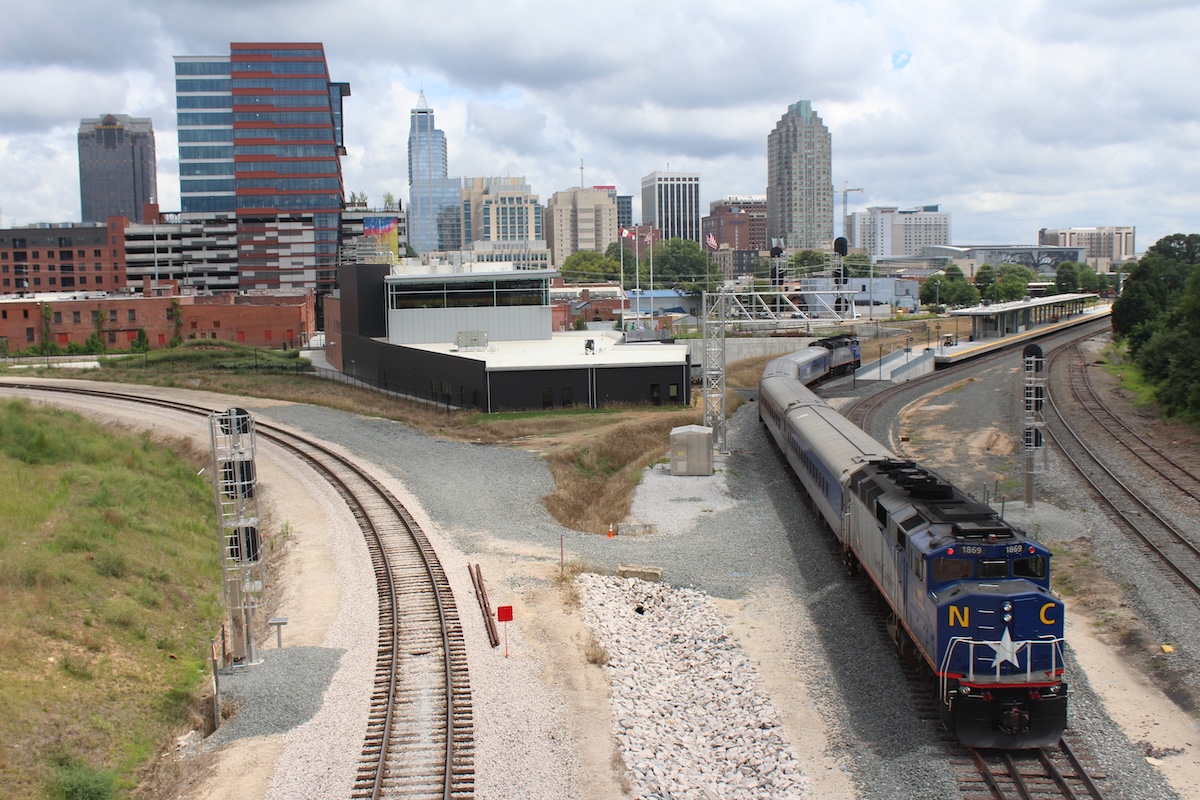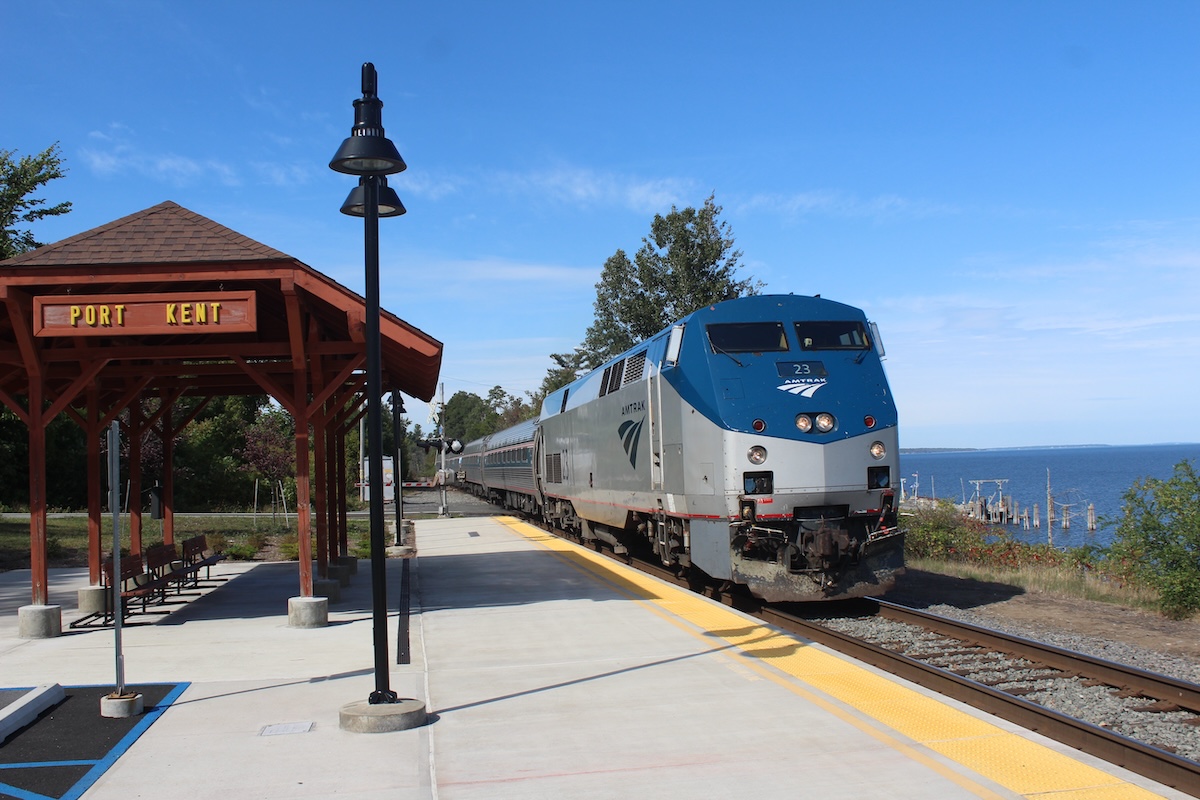
WASHINGTON — Aside from the revelation that Amtrak CEO Stephen Gardner was granted $620,000 in bonuses on top of a $500,000 salary last year, very little new ground was covered at today’s House Transportation and Infrastructure Committee’s Rail Subcommittee hearing.
The hearing, “Amtrak and Intercity Passenger Rail Oversight: Promoting Performance, Safety and Accountability,” was abruptly scheduled by Subcommittee Chairman Troy Nehls, R-Texas, to follow the introduction of legislation calling for more Amtrak transparency. [see, “House bills would require open Amtrak meetings, notification on executive bonuses,” News Wire June 11, 2024]

Amtrak Board Chairman Anthony Coscia’s opening statement and answers to questioning by panel members throughout the session claimed the bonuses and incentives “allowed us to rebuild our workforce and attract new employees with the expertise we needed.”
But his remarks dealt solely with attracting and keeping management talent at the executive level, claiming the pension program it replaced was “a very costly benefit program.” Coscia did note that executive compensation details will be posted on Amtrak’s website later this week.
The final witness was North Carolina Deputy Secretary of Multimodal Transportation Julie White. Her testimony reminded lawmakers that rail is the only transportation mode that does not have formula-based, consistent, and predictable source of funding. With seven North Carolina entrants in the Federal Railroad Administration’s Corridor ID program, she explained that state communities along corridors fortunate enough to be selected in Corridor ID Phase 2 will be expected to contribute to the 10% match to advance those projects.
As expected, statements and questioning of witnesses by more than a half-dozen Republican subcommittee members primarily from rural districts with or without Amtrak long-distance service reflected their ideological opposition to passenger rail because it doesn’t make a profit.
In response, Rep. Seth Moulton, D-Mass., wondered why participants at non-rail hearings never dwell on how much money highways lose or whether airlines would be profitable if public funds didn’t pay for airports, security, or air control systems.
However, Moulton also complained that the sealed corridor S-Line rebuild North Carolina’s White referenced that will cut an hour of travel time between Richmond, Va., and Raleigh, N.C., was “1920’s technology” because maximum speeds would only be 110 mph.

Subcommittee ranking member Frederica Wilson, D-Fla., who represents the Miami area, asked CEO Gardner why Amtrak had not yet moved its South Florida terminus from out-of-the-way Hialeah to the Miami Intermodal Airport station that has been ready for Amtrak trains for about eight years.
Gardner said Amtrak is “in active conversations” with the Florida Department of Transportation, the Miami-Dade Airport Authority, and Tri-Rail, to come up with “the right deal for Amtrak in terms of its tenancy.” But he offered no insight as to when those negotiations would bear fruit.
Although she did not speak at Wednesday’s hearing, Rep. Elise Stefanik, R-N.Y., whose district includes the northern New York portion of the New York-Montreal Adirondack route, on Tuesday characterized the lack of transparency from Canadian National and Amtrak over the summer-long hiatus of the train north of Saratoga Springs, N.Y., as “completely unacceptable.”
The press release recounted how the congresswoman on May 17 announced a “settlement payment to undertake trackwork on [Canadian National’s] Rouses Point Subdivision for Amtrak’s benefit,” but did not reveal the cost or what the project entailed.

The statement also failed to mention that any decisions on how the train is operated would involve New York State Department of Transportation’s Rail Division, which has always deferred News Wire inquiries to Amtrak.
A video of today’s hearing is available on the House Transportation and Infrastructure Committee website.














When Amtrak took over passenger service in 1971, they said they would be profitable in five years, hope no one was holding their breath waiting.
Normally I like Stefanik but the line I loved is CP and not CN! perhaps that’s why she gets no response. Ad iñterruption isn’t helping TRAINS! Juliette Bronoche or something like that.
stop hacks from getting pay like that, just make it run better no politics. its not joe railroad it is americas railroad, get it done, no high pay for most management utill the get it right it is not an airline it is a railroad.
Can’t figure out why these idiots talk about AMTRAK profitability. It will never make a profit and will need government subsidy.
What Congress doesn’t talk about is how much the Airline industry is being Subsidized. Vast majority of the public think the fees that are tacked on to the price of an airline ticket covers everything. WRONG it only covers a small part. Government pays for the Air Traffic Controllers, The FAA, and Most of the cost of building and upkeep of Airports. The list goes on and on.
Depending on who you talk to, an airline ticket’s TRUE cost would be close to double of what is being charged to break even. Factoring in ALL the subsidizes the Airlines have received over the years, the industry as a whole hasn’t made any or much money. If my memory is correct only 1 major airline hasn’t filled for bankruptcy (Southwest). Yes, even all the legacy airlines (United, American, Delta) have been in bankruptcy writing off millions if not billions of dollars in losses. Can’t count the number of airlines that went broke and aren’t with us anymore (Pan Am, National, Eastern, Braniff to name a few.
If you subsidize one you should subsidize the other.
Really?? Playing the profit card again obviously the (R) Reps were not briefed by their staff since this wasn’t a main event at the Capitals three ring circus. Hwys haven’t been profitable since 2008 when the Hwy Trust Fund went bankrupt being as the Fed gas tax hadn’t been increased since Bill Clinton was president so “these” people tapped the Treasury to make up the difference to the tune of over $100 billion dollars to date not to mention the bulk (80%) of the Infrastructure Bill is going to hwys all because drivers felt they were entitled to this free ride which added to the deficit which they are all wringing their hands about now. Perhaps the Gov’t should get out of the transportation business all together sell off the Interstates & charge tolls, let the states & counties charge gas tax for their hwy needs, get out of the airline business privatize the Air Traffic Control system & turn the TSA back to the airports & airlines to manage so many here complain about Govt incompetence yet you trust them with your safety when flying seems bewildering. Let’s see if we still have record travel numbers each holiday if people actually have to pay the full cost of their “getaways”.
Well said Mr. Riley.
“Aside from the revelation that Amtrak CEO Stephen Gardner was granted $620,000 in bonuses on top of a $500,000 salary last year”
Wow…it really pays to kiss the correct arse, doesn’t it???
How much worse would he have to perform to NOT get the bonus?
M. Shigley’s comment sums it all up perfectly.
More corporate blather, double-speak, and obfuscation. What else is new?
Where are Trent Lott and Kay Bailey Hutchinson when we need them?
They would have made tony and Stevie mince meat long time ago.
She would have been appalled over the pathetic remnant that today’s Texas Eagle has become.
Downing Jenks would be proud.
And the hearing missed an opportunity for grilling Gardner on his failures on returning rolling stock to service, buying new rolling stock that works, flabby dining car service, etc.; and for grilling Coscia on why the Board is so deferential to Gardner and won’t hold him and his senior management accountable.
The NY Times story repeatedly noted that Amtrak loses money. Making money is not a goal that Congress sets for Amtrak anymore.
Why should Amtrak earn a profit, when the politicians can simply fund it with taxpayer dollars, to the tune of however much they want????
(a) I understand Stevie’s salary but I don’t get the bonus. Bonus for exactly what? For showing up? Does he get a bonus for cutting expenses? Or for running trains on time.
(b) Want something to cut, Congress People? Start with Essential Air Services. Then we can get to the fact that Amtrak doesn’t run at a profit.
(c) Government waste? Start with Biden spending $320,000,000 (not appropriated by Congress) for a pier at Gaza that collapsed. For $320,000,000 we could add passenger trains where they’re needed.
Floating piers have that problem. Both Mulberry floating harbors at the Normandy Beach washed out in a storm. Only the one in the British sector was rebuilt. These became more important when the Germans thoroughly destroyed all the French harbors, and Field Marshal Montgomery captured Antwerp but did not clear the North bank of the Scheldt of Wehrmacht forces, renderring that intact harbor useless.
In the main article, a Congress Member noted 110 mph was “1920’s technology.” In the 1920’s 70-80 mph was fast. What was faster back then?
Even today, mefium-distance trains only need to beat the Interstate or the hassle of TSA.
Charles, thanks for the mention of Essential Air Services. This is a relatively unknown program that is exceptionally costly. Here in Vermont, subside costs per passenger were estimated at over $1,000.00 for one route. Again, that is per passenger. I can’t imagine what the cost would be if all expenses, such as maintaining runways, were included.
Laurence, credit is NOT TO ME but to other people posting on these pages. As I’m the advocate for aviation (and a frequent flier) it’s OTHER PEOPLE posting that mentioned Essential Air Services to me. I should have known but I was blind to it.
I have seen little planes loading at BNA Nashville International for Marion (Illinois), Owensboro (Kentucky) and Corinth (Mississippi). The passenger revenue wouldn’t begin to pay for these flights.
The Essential Air Service program hasn’t prevented the disappearance of air service in the last decade from many small and medium airports in smaller metropolitan areas. Even intercity bus service in Pennsylvania, a vibrant market even 40 years ago with multiple departure and robust connections now requires a subsidy and runs maybe a pair of runs a day that are short and have very inconvenient connections.